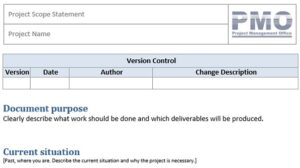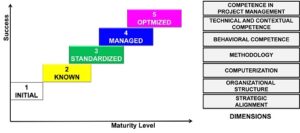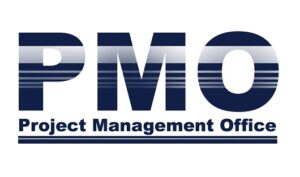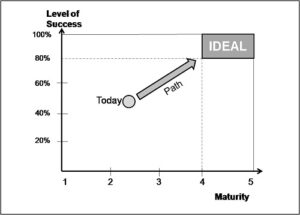Maturity in Project Management Series[1]
By Russell D. Archibald & Darci Prado
This is the fourth of a series of articles on PPPMM.
PM Maturity for Project Categories[2]
Here we describe the need for systematically categorizing the many different types of projects that exist, discuss a few of the many possible ways to categorize them, and present a widely used project categorization approach that has proven practical for many organizations. That project categorization model has been used since 2005 in the project management (PM) maturity research conducted using the Prado PM Maturity Model in Brazil, Italy, Spain, Portugal, Mexico, and the United States.
The Need for Categorizing Projects and Programs
Significant differences exist between the many projects within:
- The total spectrum of actual projects that exist in the worlds of government, business and industry, and
- The smaller numbers of different kinds of projects that are being planned and executed within one organizational entity or enterprise.
Practical experience over many decades in creating and managing the many types (or categories) of projects that exist has led to:
- Recognition that the diversity inherent within the many existing and potential projects demands that projects be segregated in several ways for several purposes, to continue to improve the ways in which both the buyers (owners) and sellers (contractors or developers) manage specific projects.
- Recognition, definition and understanding of the project management (PM) principles and practices common to all (or at least many) projects in all types of human endeavors and organizations, as documented in the several PM bodies of knowledge and the PM literature in general.
These categorization purposes within an enterprise are to:
- Strategically and operationally select, authorize, and prioritize their projects.
- Operationally plan and execute their projects:
- individually,
- within programs, and
- within project portfolios.
- Measure and benchmark the maturity of the project, program, and portfolio management capabilities within organizations, and implement effective improvements in those capabilities to achieve greater project success, project value, and stakeholder satisfaction.
- Educate and train the managers and specialists involved in projects and PM.
- Develop and manage the careers of managers and specialists involved in creating and managing projects, the project management discipline, and its informational tools.
Methods of Project Categorization
A number of project attributes that can be used to categorize or classify projects have been identified by Crawford et al (2004), but to date there is not one method or system in use across all industries or governments. Of the many possibilities we present four different approaches here that convey some of the important characteristics of projects and programs.
De facto project categorization or specialization
Today, within the PM practices of large and small organizations and within some of the recognized PM bodies of knowledge and standards, we can see de facto categorization of projects for various purposes.
Many PM practitioners report that “our organization does not categorize our projects in any formal way.” However, the structure of their organization itself usually creates de facto categorization.
For example, it is common for one company, or one division/department of a larger company, to be devoted only to IT hardware (new product development) and/or software projects, which are in themselves important project categories.
The larger facilities engineering/construction companies often create operating divisions devoted to sub-categories of projects such as energy plants, commercial structures, high-rise buildings, dams, and transportation (highways, bridges, etc.). Many companies or government agencies are devoted to only one or a few categories of projects. Movement toward broader recognition that one PM standard does not fit all projects is demonstrated by the production of various standards in recent years within both the Project Management Institute /PMI® and some of the 58 national associations that are members of the International Project Management Association/IPMA.
For example, the top five areas of PM application/industries represented by the 439,677 members (as of February 2014) of PMI in 120 countries are “computers/software/data processing, information technology, telecommunications, business management, and financial services” (PMI Corporate Council Update March 2003, p 3, the latest published data available for these categories), even though the facilities construction and aerospace/defense industries are the most mature PM areas of application in most countries.
A systematic approach to project categorization is necessary to achieve the most effective PM success and to accelerate the development of and improvements in the PM discipline. Research (see Crawford et al 2004 and Archibald 2007) shows that there are many characteristics and attributes of projects that can be used, and in fact are being used, to categorize and/or classify projects. There are also many purposes and uses of the various categorizations. Four of those approaches are briefly discussed here.
Strategic categorization by market share and strategic intent
One method (Fern 2004) for categorizing projects according to market share and strategic intent combines the Boston Consulting Group´s well-known matrix (Figure 1, relating product or service market share with market growth) and Hammel and Prahalad´s (1989) theory that products are developed to conform to the requirements of one of three strategic intents: technological excellence, operational excellence, or customer intimacy.
This method of project categorization is useful when allocating limited resources and prioritizing projects that are competing for those common resources, including funding, skilled people, and specialized facilities and equipment.
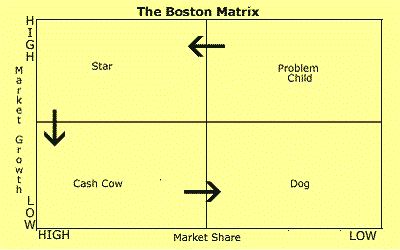
Figure 1. The Boston Matrix.
Project categorization by scope and technology
Shenhar et al (1996) provide an excellent examination and discussion of attributes that can be used to classify projects from the perspective of relationships between project scope and technology content and uncertainty, as shown in Fig. 2.
Categorizing projects in this manner can be useful to determine the qualifications and assigned authority of the project (or program) manager or director, and also the specific project management tools and processes to be used to plan, estimate, assess and manage risks, evaluate, report and control the project.
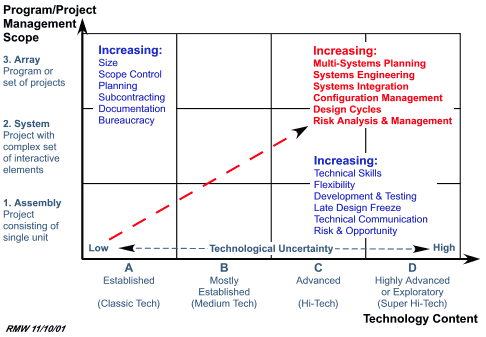
Figure 2. Relationships between Project Scope and Technology Content and Uncertainty.
Source: Shenhar et al, 1996. Used with permission.
The Project Diamond Model to Distinguish Between Projects
Shenhar (2012) and Shenhar and Dvir (2007) have developed an innovative and useful approach to distinguishing between projects with their Project Diamond Model. This model enables a project to be rated on four axes: complexity, technology, novelty, and pace. Figure 3 shows the four attributes that are used in this model to indicate where a specific project falls on each of these.
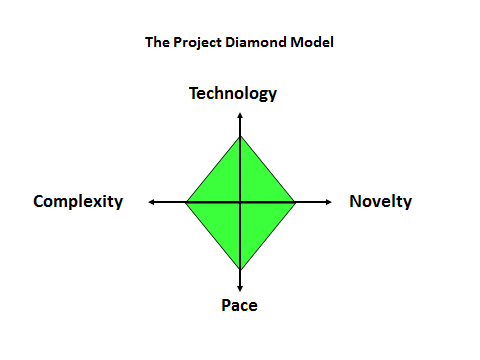
Figure 3. Using the Project Diamond Model to Distinguish Between Projects.
Source: Shenhar 2012. Used with permission.
Figure 4 provides more details used to place a specific project on each axis.
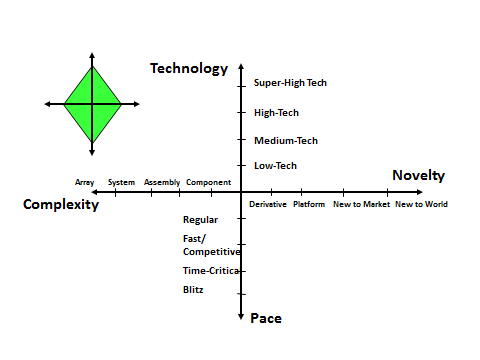
Figure 4. Project Types within the Project Diamond Model
Source: Shenhar 2012. Used with permission.
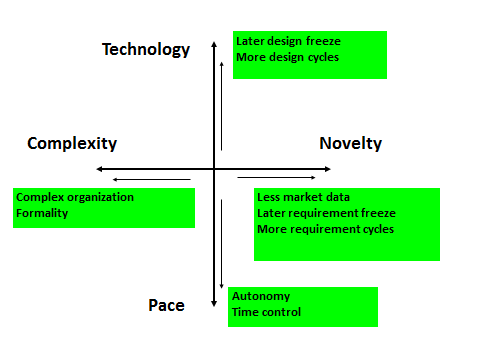
Figure 5. The Impact of the Diamond Dimensions on Project Management.
Source: Shenhar 2012. Used with permission.
Figure 5 illustrates the impact of these dimensions on the project management methods required for the project in question. Armed with this knowledge responsible executives can determine the best approach to governing and managing the project.
Categorizing by a Project´s Products and/or Other Results: the Archibald Model
From the perspectives of achieving project success and of developing and improving project management capabilities within an enterprise, categorizing projects by end product or results has proven to be useful, because the type of product or service determines the type of work involved and hence the best methodologies for managing the project.
The basic premise is simple: for a project to be successful, different types of project work associated with different types of product need to be managed differently. An experienced engineering-procurement-construction (EPC) project manager will often not be very successful managing a typical information technology (IT) software project. The project management methods and tools that are successful for an EPC facilities project are not very useful for an IT or new product development project.
A proven categorization method based primarily on the project end results is shown in Table 1. Sub-categories are shown for several of the twelve major project categories. For a discussion of the very distinctive project lifecycle models that are used for the various categories in this table see Archibald 2003, pp. 40-49.
Concerning the important Category 5-Facilities, shown in Table 1, even though the design, procurement, construction, and commissioning phases of these projects (which are often called “capital” projects or capital investments) must all be integrated for effective project management, the design and construction phases are often treated as separate project categories when one company performs the engineering design phase and another company carries out the procurement, construction and commissioning phases. This is the case in the research that uses the Prado PM Maturity Model in Brazil and other countries.
Table 1.Project categories/sub-categories with each category having similar project life cycle phases and project management processes.
Source: Archibald 2013, p 9.
|
Project Categories: with similar life cycle project management models/processes |
Examples |
|
|
|
|
Projects
|
|
|
|
Civil Energy Environmental High-rise Industrial Commercial Residential Ships |
Dam; highway interchange. Power generation plant; oil/gas pipeline. Chemical waste cleanup. 40 story office building. New manufacturing plant. Shopping center; office building. New housing sub-division. Tanker, container, or passenger ship. |
(Software) Projects |
New project management information system. (Information system hardware is in the product development category.) |
|
People and process intensive projects in developing countries funded by The World Bank, regional development banks, US AID, UNIDO, other UN, and government agencies; and Capital/civil works intensive projects-often somewhat different from 5. Facility Projects as they may include, as part of the project, creating an organizational entity to operate and maintain the facility, and lending agencies impose their project life cycle and reporting requirements. |
Projects
|
|
Development Projects
|
|
|
|
|
Major surgical procedure. |
|
Disaster recovery, other… |
Classifying projects within categories and sub-categories: There is usually a wide range in the size, risk and complexity of projects within each project category or sub-category in large organizations. The project management process for each project category must provide the flexibility to choose the proper level of planning and control for large, complex, high-risk, `new territory´ projects compared to smaller or `old hat´ projects. Therefore it is desirable to further classify projects within categories or sub-categories using some of the attributes identified by Crawford et al (2005), or using some of the following classifying characteristics.
Major and Minor Projects within a Category
Classifying Projects within Categories & Sub-Categories:
- Major or Minor Projects
Size (money, scope, duration, etc.);
relative to organizational size and experience - Project Complexity & Risk
Number of different skills or technologies needed, geography/cultures/languages;
risks can be financial, technological, political, time pressure, or others - Strategic Transformational Programs
Multiple projects (and programs) that also directly involve on-going operations - Mega Projects and Programs
Major projects on steroids, usually major programs over a number of years
It is useful to identify at least two classes of projects within each category. Some organizations use three or even four classes within a specific category. For purposes of discussion here we will call these major and minor projects, although each organization can probably define more descriptive names for their situation. The distinction between these major and minor classes will be noted in the following definitions.
Major Projects are those whose large size, great complexity and/or higher risks require:
- Designation of an Executive Project Sponsor;
- Assignment of a full-time Project (or Program) Manager or Director;
- The full application of the complete project management process specified for the particular project category for major projects (all specified forms, approvals, plans, schedules, budgets, controls, reports, frequent project review meetings, with substantial levels of detail in each.)
Minor Projects are those whose size, simplicity and low risk allow:
- No formal assignment of an Executive Project Sponsor; sponsor role retained within the line organization.
- One project manager to manage two or more minor projects simultaneously;
- Less than the full application of the complete project management process for the project category (selected basic forms, approvals, plans, schedules, budgets, controls, reports, less frequent project review meetings, with less detail required in each.)
Project Complexity and Risk
The complexity of a project is indicated by the:
- Diversity inherent in the project objectives and scope.
- Number of different internal and external organizations involved, which is usually an indication of the number of required specialized skills.
- Sources and complexity of technology required.
- Sources of funding.
- External or internal customer.
- Degree of customer Involvement in the project.
- Levels of risk (economic, technical, political, other).
Strategic Transformational Projects and Programs
These innovative projects and programs will obviously be major, complex, and usually high risk endeavors to which the above considerations will apply. These usually include projects as well as ongoing operations.
“Mega” Projects and Programs
Beyond the preceding discussion of programs and projects within an enterprise there is a special class of human endeavors that have been given the name “Mega.”
These usually involve both governmental and private enterprises, and typically involve consortiums of large companies. Examples include the Channel Tunnel railroad from London to Calais; each of today´s International Olympic Games events; the design, construction, and commissioning of large industrial complexes with residential cities in previously uninhabited areas of the world; and recovery from large, natural disasters.
Such enormous undertakings, which can last up to 15 to 20 years in some cases, present unique governance and management challenges and are beyond the scope of this discussion.
For an authoritative and useful presentation on this subject we recommend the book Strategic Program Management (Prieto 2008.)
The Major Projects Association was formed in the United Kingdom in 1981 to address the challenges posed by mega projects and programs.
“The purpose of the Major Projects Association is to improve the initiation and delivery of major projects through the interaction of members from all sectors in sharing experience, knowledge and ideas,” according to Dr. Martin Barnes CBE, Former Executive Director, Major Projects Association. See www.majorprojects.org for more information.
Measuring PM Maturity using the Prado PM Maturity Model and the Archibald Project Categorization Model
The PM maturity research that has been conducted since 2005 by the authors and their extended volunteer teams in several countries has used the Prado PM Maturity Model, described in some detail in the third article in this series, combined with the Archibald categorization model described above, with the exception that Category 5 has been divided into two parts:
5a. Engineering/Architecture Design Projects, and
5b. Facility design/procurement/construction.
The organizations within which the projects, programs, and portfolios exist are identified as being within these four major categories:
- Private sector corporations and other companies
- Third Sector (NGOs, not-for-profit, etc.)
- Government-Indirect Administration
- Government-Direct Administration.
These organizations are also identified as operating within these business areas:
- Agriculture, Cattle Raising, Silviculture and Forest Exploration
- Food and beverages
- Banking, finance and insurance
- Trading
- Construction
- Consulting
- Defense, Security and Aeronautics
- Distribution (Water, gas)
- Education
- Electronics
- Engineering
- Electrical Energy (Production and/or Distribution)
- Pharmaceutical
- Mining
- Metallurgy and Steelmaking
- Paper and Cellulose
- Oil and Gas
- Chemical
- Refractories, Ceramic and Glass
- Health
- Information Technology (Hardware & Software)
- Telecommunications
- Textile
- Transportation, Storage & Services, Logistics
- Tourism & Sports
- Automotive & Automotive Parts
- Clothing, Footwear, Fashion and Sports Equipment
- Other
In addition, the identification of the organizations participating in this PPPM maturity research includes the organizations´ size, in terms of revenue and number of employees, as well as the average cost of the projects within the project categories being evaluated.
This organizational and project identification information enables the measurement of PM maturity for each of the specific project categories, and benchmarking of the results within both the four major organizational sectors and within each of the 28 business areas. As can been seen in the reports that are available on the maturity web site, a number of cross-referenced comparisons using many of these dimensions have been produced. Within the research web site (http://www.maturityresearch.com/ ) there are many more reports available in the Portuguese language portion than in the other languages shown. Many of these can be reasonably well translated to your language using Google Translate.
In subsequent articles in this series we will present and discuss these research results, together with lessons learned in creating growth and improvement plans for the PM capabilities of these various organizations. Future articles will also discuss the impact of PM maturity on project, program, and portfolio success rates.
References
Archibald, Russell D., and Shane C. Archibald, Leading & Managing Innovation-What Every Executive Team Must Know about Project, Program, and Portfolio Management, Infinity Publishing, 2013.
Archibald, Russell D., “A Global Systems for Categorizing Projects,” IPMA Project Perspectives 2013 at http://ipma.ch/assets/re-perspectives_2013.pdf .
___________, “The Purposes and Methods of Practical Project Categorization,” International Project/Program Management Workshop 5, ESC Lille – Lille Graduate School of Management , Lille, France. August 22 to 26, 2005, modified May 28 2007. Available at http://russarchibald.com/recent-papers-presentations/categorizing-projects/ .
___________, Managing High-Technology Programs and Projects, 3rd ed. New York: John Wiley & Sons, 2003.
Crawford, Lynn, J. Brian Hobbs, and J. Rodney Turner, Project Categorization Systems: Aligning Capability with Strategy for Better Results, Newtown Square, PA: Project Management Institute, 2004. ISBN 1-930699-3-87. 171 pp.
Fern, Edward, “Strategic Categorization of Projects,” 2004. Available at
Hamel, Gary & C. K. Prahalad, “Strategic Intent,” Harvard Business Review, May-June 1989.
Prieto, Bob, Strategic Program Management, 2008. Construction Management Association of America, McLean, VA USA.
Shenhar, Aaron J., James J. Renier, and R. Max Wideman, “Project Management: From Genesis to Content to Classification, INFORMS Conference, Washington, DC. May, 1996. Available at http://www.maxwideman.com/papers/genesis/background.htm .
Shenhar, Aaron J. and Dov Dvir, Reinventing Project Management: The Diamond Approach to Successful Growth and Innovation, Harvard Business School Press, 2007.
Shenhar, Aaron J., “What´s the Next Generation of Project Management,” PMI Global Congress 2012 North America, Session # RES01, Vancouver BC, Canada, October 20-23, 2012.
[1] The Project Management Maturity series of articles by Russell Archibald & Prof Darci Prado is based on their extensive research on this topic in Brazil, the United States and other countries. Russ is one of the pioneers in the project management field and the originator of the Archibald Project Categorization Model. Darci is the developer of the Prado Project Management Maturity Model which has been successfully implemented by many organizations in Brazil. More about this model and related research can be found at http://www.maturityresearch.com/.
[2] Adapted from Chapter 3, “Categories and Characteristics of Projects,” Leading & Managing Innovation-What Every Executive Team Must Know about Project, Program, and Portfolio Management, by Russell D. and Shane C. Archibald, 2013.
This article has been published by PM World Journal at http://pmworldjournal.net/
About the Authors

Russell D. Archibald
San Miguel de Allende, Mexico
![]()
![]()
Russell D. Archibald: PhD (Hon) ESC-Lille (Fr), MSc (U of Texas) & BS (U of Missouri) Mechanical Engineering, PMP, Fellow PMI and Honorary Fellow APM/IPMA (member of the Board of IPMA/INTERNET 1974-83), held engineering and executive positions in aerospace, petroleum, telecommunications, and automotive industries in the USA, France, Mexico and Venezuela (1948-1982). Russ also had 9 years of active duty as a pilot officer with the U.S. Army Air Corps (1943-46) and as a Senior Pilot and Project Engineer with the U. S. Air Force (1951-58.) Since 1982 he has consulted to companies, agencies and development banks in 16 countries on 4 continents, and has taught project management principles and practices to thousands of managers and specialists around the world. He is co-author (with Shane Archibald) of Leading and Managing Innovation: What Every Executive Team Must Know About Project, Program, and Portfolio Management (2013); author of Managing High-Technology Programs and Projects (3rd Edition 2003), also published in Russian, Italian, and Chinese; other books (in English, Italian, Japanese, and Hungarian); and many papers on project management. Web-site: http://russarchibald.com E-mail: russell_archibald@yahoo.com

Darci Prado, PhD
Minas Gerais, Brazil
![]()
Darci Prado is a consultant and partner of INDG in Brazil. He is an engineer, with graduate studies in Economical Engineering at UCMG and PhD in Project Management from UNICAMP, Brazil. He has worked for IBM for 25 years and with UFMG Engineering School for 32 years. He holds the IPMA Level B Certification. He was one of the founders of Minas Gerais State and Parana State PMI chapters, and he was member of Board Directors of Minas Gerais State PMI chapter during 1998-2002 and member of the Consulting Board during 2003-2009. He was also the president of IPMA Minas Gerais State chapter during 2006-2008. He is conducting a Project Management maturity research in Brazil, Italy, Spain and Portugal together with Russell Archibald. He is author of nine books on project management and is also author of a methodology, a software application, and a maturity model for project management. Darci can be contacted at darciprado@uol.com.br

